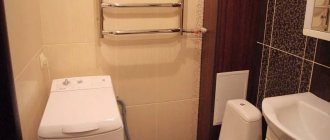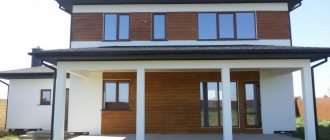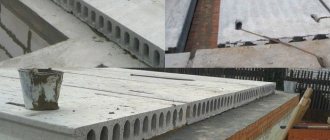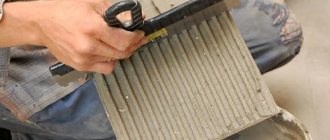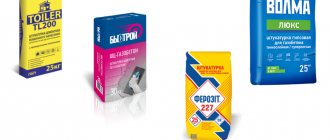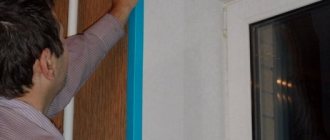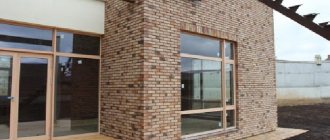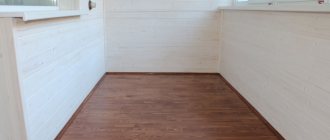We learn to preserve, paint, clean and fit brick walls into interior compositions
An unplastered brick wall can be viewed as historical value, a statement piece, or a whimsical decoration.
Everyone's perception is different, but the fact remains: a bare brick wall attracts the eye, makes people stop, take a closer look at it and decide whether it is beautiful or gloomy. Having a brick wall in the interior can make any room unique, which will become incredibly attractive in its imperfection. Brick, unlike a smooth plastered wall, always has its own character, and what’s doubly nice is that it can be combined with any style: classic, modern or mixed. Authentic masonry will visually “insulate” any loft, and a white brick wall in the interior will add volume to it. So instead of writing off brick, let's first learn how to make it light and fashionable, preserve it, decorate it, decorate it... and finally fall in love with your creation.
How to maintain a brick wall
If you're lucky enough to own an apartment or house with a bare brick wall, in most cases you don't have to do anything to it at all - just leave it as is. However, if you want to prevent the brick from fading or crumbling over time, you will have to coat the surface with a protective compound.
If the brick wall is located in a hallway or other room that is not bright enough, cover it with transparent varnish ─ this way the material will retain its color, and the light gloss will make the room brighter. If there are no problems with lighting, give preference to a matte finish, which will protect the surface from dust but remain invisible to the eye.
How to protect brickwork from high humidity
In damp areas - for example, in the bathroom - it is especially important to make the surface of the brickwork airtight, otherwise mold and other unpleasant phenomena may appear. To do this, you need to treat the brick wall with the appropriate composition. The work is simple, you can do it yourself.
If the mortar has crumbled, it needs to be renewed or completely replaced. And only then protect the masonry from moisture. Clean out the seams between the bricks (architects say “embroider”), going 2 cm deep, and then fill the cracks with fresh mortar. Try to keep the surface level. The process is quite unpleasant, but you only need to do it once, and the results will last for many years.
In the photo: brickwork in the kitchen interior
Important Warning
The material from which bricks are made is porous, so it perfectly absorbs any dyes. If you really want to, you can remove the paint from the bricks, but this is a very labor-intensive process. Solvents produce a lot of toxic fumes, and also require time, effort and skill, so resort to them only as a last resort. If you are not sure that after a few years you will still like the color you chose for the brick wall, leave this idea. After all, there are other ways to give it a unique look.
Artwork Brickwork can make a great backdrop for a home gallery, but don't forget that hanging art on such a wall (especially large and heavy ones) will require some extra effort. You will have to drill holes in the cracks between the bricks to a depth of 2.5 cm (minimum), using a stone drill and special dowels, so that the picture holds properly. Otherwise, this type of decor is simple: the more paintings, the less attention the wall itself attracts.
Open shelves
Brickwork in the kitchen interior will look cozier if you place several open shelves on top of it - this way you will bring a warm, homely atmosphere to the room. To avoid creating visual noise, fill the shelves with plain, soft-colored items made from natural materials. Bronze-colored shelves will give a classic composition. If you are a fan of eclectic or rustic style, give preference to light wood shelves.
Graffiti
If a teenager's bedroom is located in a room with brick walls, then you can resort to the aesthetics of street art and create a graffiti-style mural. When the child comes out of the rebellious age, the composition can be scrubbed (in a small area this is not so difficult) or the wall can be repainted.
Can’t you raise your hand to make such brick beauty? In vain, street details in the interior are an ever-fashionable trend.
How to make a brick wall with your own hands
Do you already feel a little jealous of the lucky owners of brick walls? Don’t despair and don’t rush to start a major overhaul! You can always create the illusion of a brick wall by using tiles of the appropriate shape and color. Decorating with such “brick” decor gives a lot of possibilities. You can tile an entire wall or some element (apron, fireplace, window slopes). It does not hide space and does not require global restructuring. A brick background for a wall in an apartment can also be created using wallpaper with a characteristic pattern.
YOUR OPINION...
Do you have a brick or pseudo-brick wall in your apartment? How did you design it and fit it into the interior? What furniture do you think goes best with a brick wall? Share your thoughts in the comments section!
There's no going back
If you want to paint a brick wall, keep in mind that in the future you will not be able to return the brick to its natural color. It will no longer be possible to completely remove the paint from it, and every few years you will have to renew the coating.
No rush
Brick has a porous structure; it is sometimes said that it “breathes”. For this reason, after erecting the wall, you need to wait some time during which it will weather and dry. The minimum period after which new masonry can be painted is 1 month. But experts warn that if the wall is less than a year old, you should always be prepared for the fact that defects in the form of efflorescence and wet spots may appear on the paint.
Brick wall in the interior. Surface preparation, treatment and protection
Exposed brickwork in a residential interior will definitely not leave you indifferent. Usually, opinions split from loud delight to sincere misunderstanding: “how can you live with THIS.” However, if you are a fan of industrial and vintage aesthetics, lofts and interiors with a twist, there is no doubt: if the walls in your home are made of brick, you definitely shouldn’t hide such beauty and rich texture!
Interior by Robert Jenny Design
Brick will never look banal, too bourgeois or pretentious and will become an excellent backdrop for both modern and classic furniture. At the same time, you don’t have to leave untouched masonry everywhere; one accent wall in any room to your taste is enough: from the living room and bedroom to the kitchen and bathroom. You won’t have to worry about leveling, puttying and finishing the brick wall, but you will still have to carry out some cosmetic procedures. Let's deal with everything in order!
Photo: StruXture Photography
Cleaning and preparing old brickwork
Brickwork, especially if it is old, should first be cleaned of old plaster and dirt. To do this, just spray a solution of vinegar with water or a solution of a small amount of washing powder with water and 30 gm of salt on the wall and wipe it with a cloth. If the dirt is strong, you can try to scrub it off with a stiff brush, but this should be done carefully and somewhere on the edge. Only after making sure that the brick does not begin to crumble do you move to the central sections of the wall.
Related article: What are the types of wallpaper for walls?
Design by Laura Garner
Advice: caustic chemicals for cleaning brick walls should be used as carefully as possible and only in cases where it simply cannot be done otherwise.
If the contamination is severe or we are talking about a brick fireplace, you can use professional cleaning products, for example: Neomid 550, Tiprom OC, Antisolex. Remember that they should be diluted with water and applied only with rubber gloves, taking care to protect your eyes from caustic substances.
Design by InDesign / Lori Ludwick
It is likely that old brick will require additional sanding. This can be done using a grinder, a drill with a special attachment, or a wooden block wrapped in sandpaper.
Bold decor: graffiti on top of brickwork, CityLoft interior
In rooms with high humidity, such as a bathroom or kitchen, brickwork requires particularly careful pre-treatment in order to prevent the appearance of fungus and mold on its surface.
Reminder: if the mortar between the bricks begins to crumble, it should definitely be renewed, especially when it comes to wet rooms.
Interior by Todd Arenson Construction
To strengthen the mortar, the seams between the bricks are cleared (“opened”) of old mortar to a depth of about 2 cm, the surface is wiped with a damp cloth, and then filled with fresh mortar using a narrow spatula so that the surface is as smooth as possible. The process is labor-intensive, however, you only have to do it once.
Photo: Corynne Pless
After a couple of days, when the grout between the seams has dried, the brick wall can be treated with a finishing coat.
Painting the facade with water-based paint
General provisions
Painting the facade of a multi-storey building
- As we have already said, facade decoration has not only a decorative function, but also creates a certain degree of protection from the influence of weather and climatic conditions. For this purpose, there are various types of cladding, and one of them is facade water-based paint.
- An ordinary water-based emulsion will not work here, because we are not talking about interior work, so acrylic or silicone paint for facades is most often used. They are the most versatile and have a long service life. For example, oil-based paint can last outdoors for no more than three years, while façade water-based paint can last from seven to 11 years if properly coated.
- If the wall of the building is located on the shady side, and even on the north side, then dampness and mold may form there, so it is recommended to use an antifungal primer before painting.
Some people advise sealing gaps and cracks with sealants or foam, but this is the same as covering them with paper, and the latter will even be more beautiful after painting. It is best to seal such holes with universal tile adhesive such as Ceresit CM-11, and if the gap is very large, then with a cement-sand mortar with the addition of a plasticizer or the same adhesive (it will not crack). Such a seal will not only level the surface, but will also create a good base for paint and strengthen the structure.
How to paint a facade
Before painting the façade must be washed
- Now let's find out how to paint facade walls with water-based paint with your own hands. The very first thing to do is wash the wall. Consider a brick building.
- If the wall has never been refinished, then at the seams between the bricks you will most likely find protruding mortar that needs to be knocked down with a chisel, or even better, with an old, unnecessary chisel. If the wall was previously painted, then check that there are no blisters anywhere, because along with the old paint, the new paint will also come off.
It is best to prime a brick façade with a brush rather than a roller.
- After the wall has dried, it should be coated with a deep-penetrating primer for painting and plastering facade work. Please note that you will not be able to properly prime the entire wall with a wool or foam roller due to the masonry joints, and a concrete wall also always has some flaws that do not allow the roller to process the entire surface. Therefore, when priming the facade, it is best to use a brush, and for hard-to-reach areas (seams) use a smaller brush.
- After this, do not rush to paint the wall right away - let the primer dry. This can take from one to four hours - everything will depend on the weather (air temperature and sunlight).
Painting the facade with a spray gun
- So, the primer on the wall dries, and during this time we prepare the paint, stirring it thoroughly. It is best to apply the first layer of coating using a spray gun - it will not completely paint the wall, but will create a good coating for subsequent adhesion.
- When working with a spray gun, do not bring it closer than 20 cm to the wall, otherwise unsightly stains will remain on the surface. The first layer, due to its thinness, will dry quite quickly and you will have to wait no more than an hour and a half.
Roller in a paint bath
The next step is to paint the wall with a woolen paint roller, but first you need to prepare the paint by pouring it into a special tray
Please note that the container is designed in such a way that the paint is in the deeper part of the container, and the shallower part is intended for squeezing out the roller. Therefore, after wetting the roller, roll it back and forth across the shallow part of the tray so that it does not splatter the paint.
The second coat of paint is applied with a roller
So, apply the second layer to the wall with a roller, thanks to this the color will be more saturated and even. For convenience, you can use a holder with a long handle - this way, in a one-story building you can do without a ladder or stool.
Painting seams
The last step will be painting the seams where the spray gun and roller could not reach. After drying, the facade is ready for use for a period of 3 to 5 years or even more. You can get additional information in the video clip attached to this article.
Brickwork processing
The texture of brick in the interior looks good on its own, however, this does not mean that its surface does not need treatment, especially when it comes to a wall in the bathroom or an apron in the kitchen. This material is porous, which means it will instantly absorb any splashes of grease, dirt, household chemicals and odors. Of course, your wall will not collapse from a couple of extra stains, but the aesthetic component will be spoiled.
Brick splashback in the kitchen, design by Luxe Interior International
Treatment with a special transparent composition will keep the surface in its original form and protect you from the appearance of mold. What could it be?
Brick and tile can be combined quite harmoniously in one interior, design British Standard by Plain English
You can protect stone and brick from moisture, detergents and grease using impregnate . This is a composition of polymers, siloxane compounds and carbohydrates that penetrates the pores without clogging them, but polymerizes them, which means the material continues to breathe. It is not difficult to find environmentally friendly compounds on sale that are completely harmless for use in the kitchen, but will not allow stains from anything to appear on the brick wall.
Brick in a bathroom interior, design by The Ransom Company
Advice: impregnate for a brick wall is preferable to the usual varnish and wax, since it does not clog the pores of the material and does not form a film on its surface, which will inevitably begin to wear off over time. The advantages of varnish include its noticeably lower cost.
Design by Impact Remodeling and Construction
Imprgnates are part of the group of water repellents - water-repellent impregnations, which are also actively used for treating bricks both inside and outside the house. Water repellents penetrate into the pores of the material and, when reacting, form a kind of sealant inside them, thanks to which water, fat, oil and other undesirable substances cannot penetrate into the brick. Hydrophobizers are environmentally friendly, protect the surface from mold, mildew and ultraviolet radiation, without affecting the appearance of the wall in any way. In addition, the surface treated with this composition is more resistant to mechanical damage and chemical cleaning.
Painting a brick wall in the interior
Brick retains its vibrant and attractive texture even under a layer of paint. For a bedroom or living room, many designers are happy to give preference to decorative painting in light colors, which looks more gentle and sophisticated and allows you to combine all the architectural elements of the wall: cornices, niches, protrusions. Most often in interiors, especially by Scandinavian designers, you can find white paint, which is great for small spaces.
Interior by The Grene Group
Reminder: the porous texture of brick absorbs paint very well, so do not rush if you are not sure whether you want to paint your wall. You will have to remove the paint with caustic solvents and, possibly, with the help of professionals.
Photo: Corynne Pless
If you want to get an unobtrusive brick texture, paint the wall with several layers of white paint; if you want to add the effect of a worn, old surface through which the original color is visible, dilute the white paint with water. You can start with a mixture of 3 parts paint to 1 part water and apply it with a large brush using loose movements. After allowing the composition to absorb into the surface a little, it can be reapplied, independently varying the amount of water and drips.
White paint with deliberate scuffs, interior by Increation
Tip: if you don’t like white, choose gray paint for a brick wall - this is a universal background for any furniture and accessories.
A white or gray brick wall is ideal for displaying a collection of paintings or family photos, designed by Mikel Irastorza
Another interesting option for decorating a brick wall is the so-called “stained” brick. If the original color of the brick seems too light to you, it can be coated with stain, similar to wood. The brick will darken, maintaining its original texture. In this way, you can create a truly amazing effect of ancient masonry even in a new house, although it will take quite a lot of time. To make the aging effect look natural, you will have to paint almost every brick separately with a small brush.
The effect of very old or “stained” brick, design by Laura Garner
Brickwork in the interior is a solution that does not become outdated and has not gone out of fashion for many years. Of course, such a wall will require some restoration and processing measures, however, all of them are not comparable in terms of money and time to conventional leveling, putty and plaster and will definitely not create a unique atmosphere in your home.
Smooth color or special effects
It is better to paint a brick wall with a brush - it is easier to feel contact with the surface and apply even strokes. The direction of painting is horizontal, according to the masonry pattern. For acrylic paint, brushes made of polyester fiber are recommended (but high quality!), alkyd and oil paints require brushes made of natural hair. The universal size and shape of a tool for painting walls is a flat brush with a width of 75 to 100 millimeters. To work out the corners, brushes that are twice as narrow, with an obliquely cut edge, will be useful.
It is better to use a roller if you want to achieve the effect of a primer layer: brick absorbs a lot of paint at once, so it will take a long time to work with a roller on a smooth coating. But a carelessly rolled layer will turn out quickly and easily!
If you apply paint with a sponge, you will get the effect of old faded masonry. In this way, you can whiten the wall and make the paint layer translucent (as in the case of working with a roller). You can use a sponge to apply bronze or silver highlights, add spots of contrasting color to the wall, or paint over images using stencils.
Another common (but more labor-intensive) painting method is to paint each brick with a paint of the same tone using a brush and use a contrasting color compound for the joints.
Methods for finishing brick walls
With all the variety of ways to perform finishing work on brick walls, they can be divided into two mutually exclusive types.
It is impossible to single out the best or the worst of them, since in a particular case each has its own advantages. You can understand how to finish a brick wall by studying the following options:
- wet method - finishing performed using plaster mixtures;
- dry method - finishing with facing materials: gypsum board, wooden panels, lining and others.
You can leave the wall unplastered, fitting it correctly into the interior
As an option for modern decor, brick walls can remain in their original form. They are washed, cleaned, varnished or painted. When creating some interiors, on the contrary, they try to reproduce the imitation of brickwork in its various variants.
The finishing method may also depend on the quality of the work on the brick walls. The feasibility of a particular method of performing finishing work can be determined depending on the deviations of the parameters of the structure being finished from the standard values indicated in the table:
| № | Type of finishing of a brick room | Vertical and horizontal deviation |
| 1 | Plaster | Up to 5 cm |
| 2 | Cladding with various materials | More than 5 cm |
These recommendations are due to the fact that increasing the layer of plaster will increase financial costs and may negatively affect the quality of the work performed.
What is it for?
Painting brickwork is necessary to perform cosmetic finishing and create a protective layer from external factors.
To achieve the expected results, close attention is paid to the preparatory process. The end result of painting is the formation of glossy or matte surfaces, visually expanding the space if finishing work was carried out on interior walls.
Wall finishing with gypsum board
Installing plasterboard coating on brick walls is a widely used finishing option. This technology has many positive aspects, thanks to which gypsum board is very popular when creating a wide variety of interior interiors for various purposes:
- gypsum board can be used to create a perfectly flat surface, which greatly simplifies the subsequent work of wallpapering, laying tiles or simply painting;
- gypsum plaster walls can bear the load from the weight of household appliances, furniture and decorative elements;
- You can not only cover brick walls with gypsum board, but also make niches, pilasters, columns and other architectural details that can decorate the room being finished;
- When finishing a brick wall from the inside with plasterboard, in parallel, if necessary, you can make additional insulation of the walls by laying insulation between the main wall and the gypsum board sheets.
Cladding brick walls with plasterboard eliminates wet technological operations.
In addition, the popularity of gypsum board is associated with the technology of its installation, accessible to everyone, which consists of performing simple operations:
- A special metal gypsum plaster profile is placed plumb and level on brick walls.
- Gypsum sheets are attached to the frame with self-tapping screws.
- The seams are puttied and taped with reinforcing tape to prevent the formation of cracks.
- The holes in the places where the self-tapping screws pass are also puttied.
- Putty areas are sanded and primed.
The resulting surface can be painted, wallpapered, tiled, or treated with decorative plaster to create a unique interior.
Important points when working
In order to immediately see and eliminate unpainted areas and other defects during the interior finishing process, you need to install lighting. For this purpose, it is better to use a 15 W energy-saving lamp with a lampshade. It is attached to a temporary tripod, which is placed on the side of the wall so that the light falls almost parallel to the surface. The device is moved as the work progresses.
To obtain an even coating, it is necessary to evenly distribute the paint inside the roller coat. To do this, carefully roll it out on a sheet of cardboard or a piece of linoleum (but not on the surface to be painted).
Plastering brick walls
Plastering the walls can only be done after the brickwork has dried and the mortar has hardened and reached its design strength.
If you plaster dry walls, the plaster layer will crack and collapse in places. Carrying out the presented event includes the following steps:
- the wall surface is cleaned with a metal brush;
- moistened with water using a brush;
- a liquid plaster solution is sprayed;
- after the first layer has dried, a second main plaster layer with a thickness of no more than 2 cm is applied. This operation is carried out using a plaster trowel and a trowel. Using a trowel, throw the mortar onto the wall, level it with a trowel, and remove the excess mortar;
- After leveling the solution, its surface is grouted. This is done using a grater in a circular motion until a smooth surface is obtained;
- if the surface has hardened and cannot be grouted with a trowel, then the plaster is wetted with water and the movements are repeated again;
- The evenness of the surface is controlled by a trowel and a rule of at least 2 m in length.
On curved walls you can’t do without spraying
If the brick walls are laid perfectly evenly and do not have large deviations, then the walls can be plastered without applying the first layer - spray. Also, to simplify the work and obtain a better surface, you can use metal beacons and ready-made plaster mixtures.
In this case, the brick wall is finished using the following technology:
- Metal beacons are attached to the wall at a distance of 1-1.5 m from each other using a level and plumb line.
- The plaster mixture is poured between them and leveled using a trowel.
- The resulting surface is rubbed with a grater.
- Beacons are removed from the plaster layer.
- The grooves from the beacons are sealed with a plaster mixture, and the resulting surface is thoroughly rubbed until it reaches a certain evenness. For details of the process, watch this video:
After plastering work is completed, the walls are puttied. Small sinkholes that cannot be eliminated when grouting the plaster layer are finally leveled for further application of the finishing coating. Plastered walls are usually painted or covered with wallpaper.
Application technology
The work is not difficult, although you will have to try to make the painted brick look presentable. Many people believe that they paint bricks solely to form a protective layer. This is an erroneous opinion, since first of all it is necessary to try to translate design ideas into reality and make the walls attractive.
The first layer of paint is applied liquid, for which the material is diluted with a solvent. After this, the main covering layer is applied, for which a spray gun, roller or wide brush is used. Work begins from the top section with a gradual shift downwards.
Treatment of facade walls is carried out in warm weather, when the temperature is twenty to twenty-five degrees.
Caring for a painted brick surface is simple - just regularly wash the wall with soapy water and renew the covering layer every five years.
Cork and wood covering
Cork panels are used to decorate bedrooms and children's rooms. This material has good sound insulation, has a pronounced texture and intricate pattern, and its installation is not difficult:
- the plug is attached with self-tapping screws to a wooden frame made of a block, previously installed on the surface to be finished;
- the seams between the panels are sealed with a special sealing material;
- The process is completed by coating the panels with varnish.
Various wooden materials are actively used for interior decoration. They do not require additional finishing, as they have an attractive appearance and go well with wooden furniture.
When finishing interior brick walls, the following important features must be taken into account:
- Such coatings should not be allowed to come into contact with moisture.
- When installing wooden coverings, it is necessary to use a membrane vapor barrier, and its fastening must be done on top of the sheathing.
- Wooden finishing boards, lining and other materials are connected to the frame and to each other without gaps, which eliminates the need for additional processing of the seams.
- Wooden coverings have good thermal insulation properties. For more information on how to cover walls with plasterboard, watch this video:
The color range of this material is quite diverse, which allows you to choose the necessary colors that harmoniously combine with the surrounding interior.
Material properties
External brick walls are usually not covered with anything. This is due to the beautiful appearance of the material itself. However, in regions with harsh climates, additional protection for the facade of a private house is necessary. This will increase the service life of the brick and give it additional attractiveness.
All types of varnishes have approximately the same properties:
- protect the surface from moisture penetration;
- strengthen the brick, penetrating deep into its structure;
- have excellent adhesion;
- insensitive to chemicals and natural solvents;
- are not afraid of temperature changes;
- do not deteriorate when exposed to sunlight;
- extend the service life of brick buildings;
- have high decorative qualities;
- protect the surface from mold and mildew.
After treatment, the brick surface acquires a beautiful appearance (“wet stone”, silky, matte - depending on the type of paintwork used), stops getting dirty and wet, acquiring moisture- and dirt-repellent properties, and perfectly withstands high temperatures, which is very important when processing stoves. The varnish coating does not wear off for a long time.
Bottom line
The correct choice of material for painting is the key to the attractive appearance of the house and the durability of its cladding. The main thing is that the composition is specifically designed for the external walls of the building. A more specific choice should be based on your own preferences and financial capabilities. Ideally, it is better to entrust the process of applying the coloring composition to professionals.
Painted brick facade Source plitka.ua
It is also extremely important to choose the right shade of the mixture. For external cladding, the color of the walls should be in harmony with the palette of the roof and the general surroundings. Too bright paint colors will stand out and spoil the overall impression of the cladding. If you can’t choose the right shade yourself, you can turn to a designer for help.
Ratings 0
Varieties
There are 4 types of decorative varnishes for bricks for exterior use: polymer, acrylic, solvent, fireplace/stove and sealing impregnations.
- Polymer. The composition includes alkyd resins, acrylic copolymers, as well as organic solvents and various additives. After treatment with such compounds, brick acquires a beautiful appearance “a la wet stone”, while its wear resistance increases. You can work with polymer varnishes even at low temperatures (down to -10° C).
- Acrylic. Used to protect brickwork during both external and internal work. One-component, organic solvent-based compounds are well absorbed into the brick, protecting it from microcracks, mechanical damage, and preventing the formation of efflorescence.
- Solvent. These are varnishes based on the same solvents with the addition of silicone resins. They penetrate deeply into the brick, creating a durable coating that does not crack, peel, or fade. Solvent varnishes are a fire hazard, so you need to work with them with extreme caution.
- Fireplace/stove. KO-85 or KO-815 are special fire-resistant varnishes. They are used for both external and internal work (strengthening the internal surfaces of fireboxes and protecting against condensation). The application of such varnishes gives brick walls heat resistance and water-repellent properties, prevents washing out of stove seams, and strengthens the masonry of a stove or fireplace.
- Sealing impregnations. Produced on the basis of silicone and acrylic resins, they give the brick maximum resistance to wear. The impregnation is fluid due to a complex mixture of aromatic and aliphatic solvents, which ensures its high penetrating ability. This coating does not turn yellow for many years. The protective layer obtained as a result of processing is resistant to water, chemicals, UV rays, oils, and reagents. After application and drying, it gives the brick an unobtrusive shine with a “wet stone” effect.
